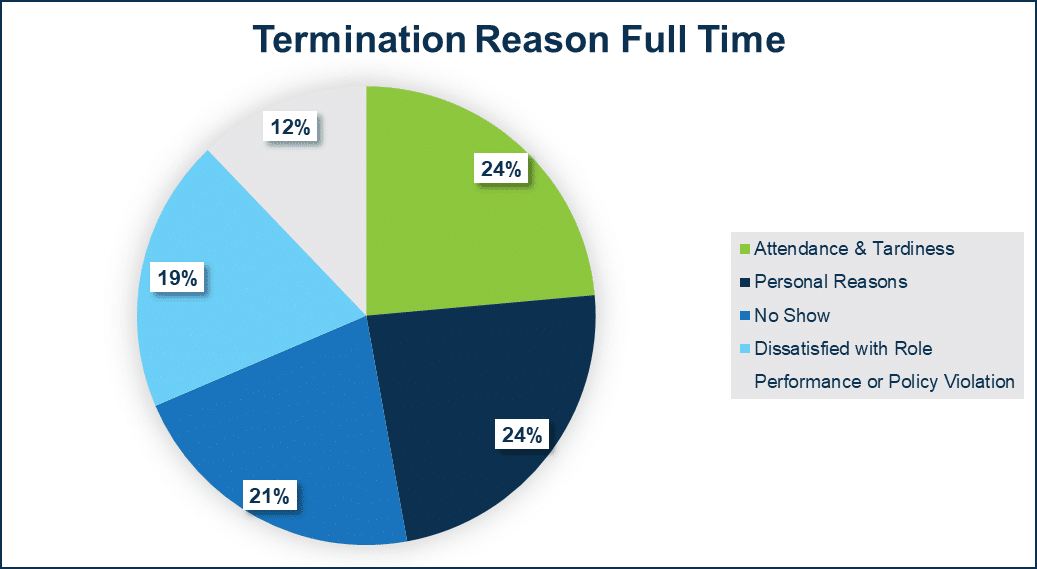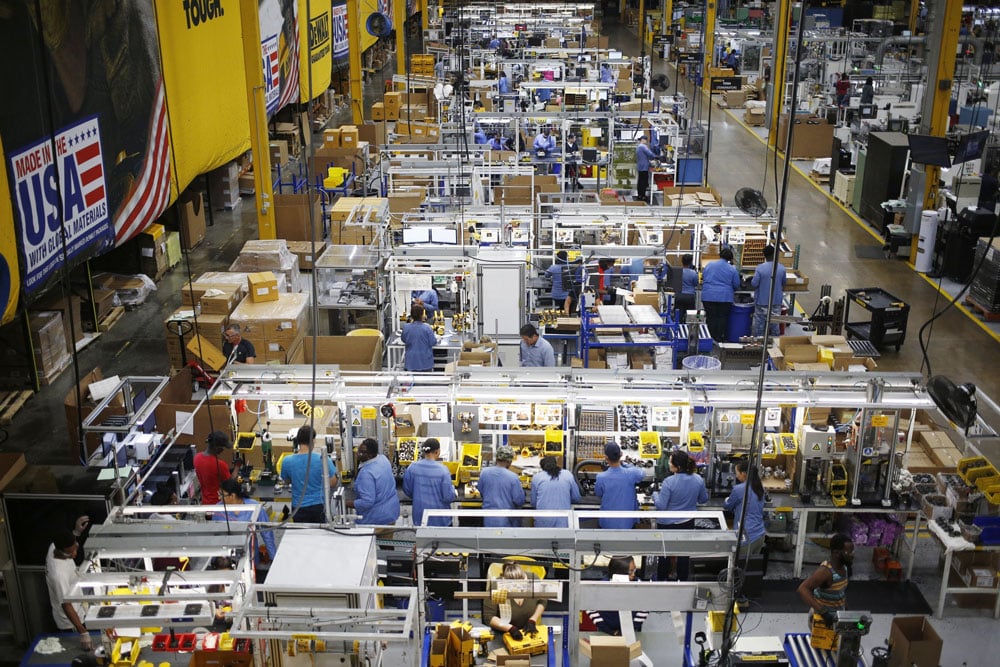Call-offs, ghosting, no-shows. Whatever you call it, being short-staffed on your production line or in your shipping department causes massive headaches and revenue losses for your business.
Most likely, you have a rough idea of what your attendance and absenteeism rates are but don’t know why it’s happening so often or how to fix it. What you do know is that absenteeism is a major issue and keeps getting worse.

By thoroughly analyzing your attendance data, you can target the root causes of absenteeism and introduce solutions that not only alleviate your headcount issue but also boost employee morale and increase retention.
How to interpret your hourly employees’ attendance data
First, understand who is missing work and when. By breaking down your absence rate into weekdays, weekends, and departments, you can identify specific times and positions that are having the most trouble. For example, we typically see higher absentee rates on 1st shift on Mondays (no surprise there) and weekend shifts that are longer than 6-8 hours. We also tend to see higher rates of call-offs and no-shows in entry-level departments like assembly and packers.
Too often, when absenteeism reaches 10%-20%, the typical response is to think people are just lazy or unreliable. This is untrue (mostly). So what’s really going on?
Let’s be honest – the typical response to having more hourly production workers ghosting on shifts or calling out last minute often looks like this:
- Increasing shift lengths
- Offering attendance incentives
- Implementing stricter attendance policies
- Increasing mandatory overtime shifts
As you have probably experienced, those changes ultimately lead to more workers quitting or being termed for attendance violations. And while attendance incentives are well-intended to improve behavior, they rarely pay off.

A data excerpt from a MyWorkChocie manufacturing client analysis report located in Ohio. Over 40% of terminations were due to attendance, tardiness, no-call no-shows in 2022.
Uncovering connections with attendance data and workforce behavior
Using attendance data can help you understand what is happening day-to-day and help you plan for days and shifts that see high absenteeism. But it doesn’t tell you the whole story. In order to get the full picture, you need to include your overtime, turnover, and contingent data as well.
Here are some common examples of what you will see:
- Daily Absenteeism rates between 15-25%
- Overtime running 10-20% over budgeted hours
- Turnover or Churn rates at 125-175% (more workers are leaving than being hired)
- Contingent or Contract hours at 20-30% of your total work hours
Once you see the data from this perspective, the story becomes clear that these are all interconnected. Download a free comprehensive workforce behavioral analysis example we deliver to MyWorkChoice business partners.
Okay, give me a real-world example
Company A sees that workers are missing more and more shifts, so they decide to change the workday to 12 hours instead of a regular 8-hour shift. That way, they can get more production and shipments out the door with fewer people in the building.
That leads to more people leaving the job from burnout, so they offer sign-on bonuses and attendance incentives – but they’re still losing more workers than they can hire, so they turn to a staffing company. The staffing company starts sending them workers who are even less dependable and typically last 4-6 weeks before leaving the job.
Company A starts making overtime mandatory and then sees their absenteeism, overtime expenses, and turnover rates start to climb even higher.
Sound familiar? The good news is that you are not the only one dealing with this. A similar story is playing out across most manufacturing and distribution sites across the country. What we need to address now is, how do I stop this cycle and build a sustainable workforce.
“These metrics are not separate issues. They’re all tied together by one thing – workers need more flexibility in their schedule for when life happens.” -Adam Raimond, SVP, North American Operations
It’s clear that what everyone really wants is flexibility in their schedule.
Everyone is looking for better work-life balance and alternatives to traditional schedules. If workers can’t find it at your company, there are hundreds of other job openings they can take and continue the cycle of taking more time off than allowed, getting too many attendance points, and leaving.
By offering hourly production workers more control over their schedule manufacturing and distribution businesses can reduce absenteeism, excessive overtime that leads to burnout, and create a sustainable workforce that stays for the long haul.







